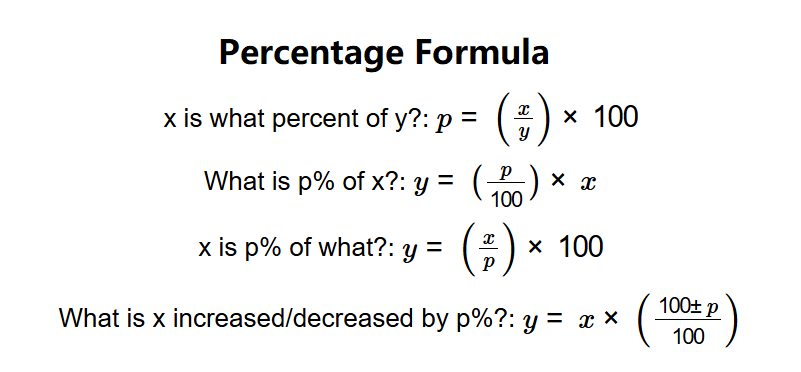 Home
Home
 Back
Back

Our Percentage Calculator is a versatile tool designed to solve all percentage-related problems instantly. Whether you're calculating discounts, tax rates, grade improvements, or statistical growth, this calculator handles basic to advanced percentage operations with precision. Ideal for students, shoppers, financiers, and analysts, it eliminates manual errors and delivers results in seconds—making percentage math effortless.
The calculator applies universal percentage formulas:
Where:
Steps:
Accurate percentage math is critical for:
Example 1: 20% Discount on a \$50 Item:
Example 2: Population Growth from 1,000 to 1,200:
Q: How do I add 15% tax to a price?
A: Multiply by 1.15 (e.g., \$100 × 1.15 = \$115).
Q: What’s the difference between percentage points and percent?
A: Percentage points measure absolute change (e.g., 5% to 10% is a 5-point increase), while percent change is relative (100% increase).
Q: Can I calculate compound percentages?
A: Yes! Use "A × (1 ± P%)^n" for sequential changes (e.g., annual interest).
Q: How to find the original price after a 25% discount?
A: Divide final price by 0.75 (e.g., \$75 ÷ 0.75 = \$100 original).
Q: Why does 10% + 10% not equal 20% of the base?
A: Sequential percentages apply to changing values (e.g., 10% of 100 = 110, then 10% of 110 = 121).
Q: How to subtract a percentage from a number?
A: Multiply by (1 - P%). E.g., subtract 30%: Multiply by 0.7.
Q: What’s the formula for percentage of total?
A: \( \frac{\text{Part}}{\text{Total}} \times 100 \) (e.g., 3 apples out of 12 = 25%).